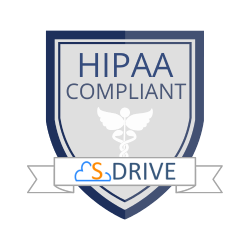Document AI is becoming a strong tool for Salesforce users who want to simplify how their teams handle documents. At its core, Document AI is a group of technologies. These tools help software understand, extract, and process information from digital and scanned documents.
Document AI uses machine learning, computer vision, and natural language processing. It turns files into usable data without needing manual work. For teams managing contracts, forms, and client records inside Salesforce, this capability solves long-standing productivity problems.
One of the most visible features within Document AI is Optical Character Recognition (OCR). OCR helps convert text from PDFs, images, or scanned forms into structured, searchable information.
However, OCR is just one piece. Document AI builds on that base to understand context, capture meaning, and automate follow-up actions. Together, these tools reduce time spent on manual data entry and help teams act on information more quickly.
How OCR Works Inside Document AI
OCR technology allows machines to “read” printed or handwritten text. It uses pattern recognition to match image data with known letters and words. Once it identifies text, it converts it into editable and searchable formats.
OCR is highly useful when teams receive scanned paperwork, such as onboarding documents or claim forms. Instead of manually retyping each entry, the system extracts the text instantly.
On its own, OCR can speed up processing. But the real power of Document AI comes from the actions that occur after extracting text. A Document AI system can recognize that a number is a social security ID, that a date relates to an expiration field, or that a checkbox confirms consent. It understands what they mean in the context of a form or workflow.
This intelligent extraction means you can route data directly into Salesforce fields. For example, a scanned medical intake form might feed into the appropriate patient record. A legal contract could automatically populate expiration dates and contact roles. These automations reduce clicks and reduce the chances of human error.
Why Document AI Is More Than Just Scanning
Many people still associate OCR with old-school scanners and legacy file systems. Modern Document AI tools work in the cloud. They connect with business platforms and keep getting better through AI learning. They can detect layout patterns, infer metadata, and even translate or summarize the content.
In Salesforce, these capabilities improve how documents connect to records, objects, and processes. Document AI can analyze a contract and enrich Salesforce data automatically. That enrichment can trigger alerts, approvals, or updates without requiring users to dig through each page.
Let’s say a finance team receives dozens of invoices per day. With Document AI, each invoice is scanned. Data is extracted, and fields like vendor, amount, and due date get matched with the right opportunity or account. That invoice can then be routed for approval or payment, and stored in the right folder structure.
Document AI Inside Salesforce Workflows
Document AI fits naturally into several workflows in Salesforce. The more document-heavy the process, the more value it can deliver.
This automation reduces context-switching for users. They no longer need to download a document, open another system, retype the content, and return to Salesforce. Instead, all relevant data stays within the Salesforce environment, tied to the correct record.
Another benefit is auditability. With structured extraction and field mapping, teams can track what information was pulled, when, and by which user or process. This improves compliance and offers better transparency during reviews.
Common Misunderstandings
Clearing up a few myths about Document AI is important. First, it’s not only useful for paper documents. Many businesses assume that because their operations are “already digital,” they don’t need OCR or Document AI.
However, plenty of digital files still arrive in unstructured formats. Users cannot process PDFs, email attachments, and screenshots unless you extract and organize their content.
Second, Document AI does not require a fully custom implementation. Many Salesforce-native tools and partner apps now offer built-in Document AI features. These don’t require data scientists or separate infrastructure. Admins or business users can configure workflows that extract fields and map them to records without heavy development effort.
Lastly, Document AI doesn’t remove human oversight. It reduces manual entry, but users can still review flagged items, verify values, or override mappings. It supports better decisions rather than replacing people entirely.
How Document AI Improves Productivity in Salesforce
Teams using Salesforce already rely on it for automation, visibility, and workflow control. Document AI adds another layer by removing friction between document receipt and business action. Every document that enters the system becomes a data source instead of a bottleneck.
This leads to measurable improvements:
- Faster record updates and fewer missed deadlines
- Reduced errors from manual data copying
- Improved compliance because of traceable, structured document data
- More accurate reporting because documents feed into dashboards with live data
- Greater employee satisfaction because of fewer repetitive tasks
Over time, these benefits multiply across departments. The sales team closes deals faster. Operations teams keep projects on track. Legal avoids version control issues. And customer service becomes more responsive.
S-Drive in Action
Within the Salesforce ecosystem, S-Drive brings Document AI capabilities directly into user workflows. Its AI-powered OCR feature allows users to extract text and auto-populate fields using uploaded forms, scans, or images. What sets it apart is how seamlessly it integrates into native Salesforce objects.
When a client uploads an ID form through S-Drive’s secure upload, the system uses OCR. It reads and extracts the ID number, name, and expiration date. These values map to the appropriate fields inside a Salesforce contact or case record. If any part of the form is missing or unreadable, users can review it directly in the same interface.
This means document collection, extraction, mapping, and storage all happen in one unified experience.
What to Consider When Implementing Document AI
If your team is exploring Document AI for Salesforce, start with a few key questions:
- Which document types do we process frequently?
- What information do we need to extract, and where does it go in Salesforce?
- Who is responsible for reviewing and approving extracted data?
- Do we have storage and compliance requirements?
Once you find some busy workflows, you can text Document AI tools that work with your current Salesforce setup. Many organizations begin with intake forms, invoices, or contracts. These documents appear often and slow down processes when done manually.
Final Thoughts
Document AI is more than just a scanning tool. This method unlocks value trapped inside documents and speeds up how teams complete work in Salesforce. As teams look for more intelligent automation, tools that combine OCR, context detection, and seamless integration will become essential.
S-Drive provides a secure, Salesforce-native way to bring Document AI and OCR into your everyday operations. With it, teams can move faster, stay compliant, and focus on more strategic tasks.
Contact us to learn more about how S-Drive can simplify your document management processes.



